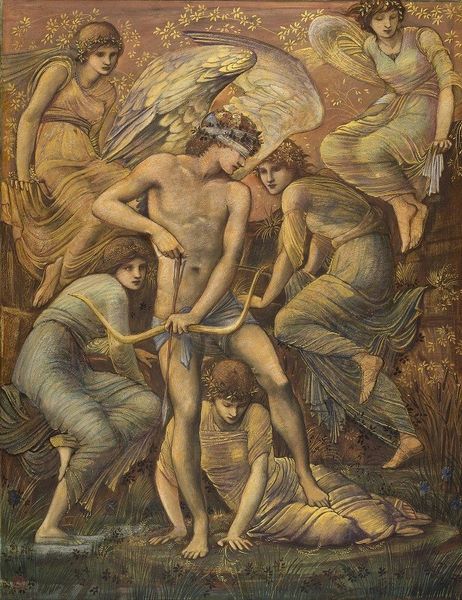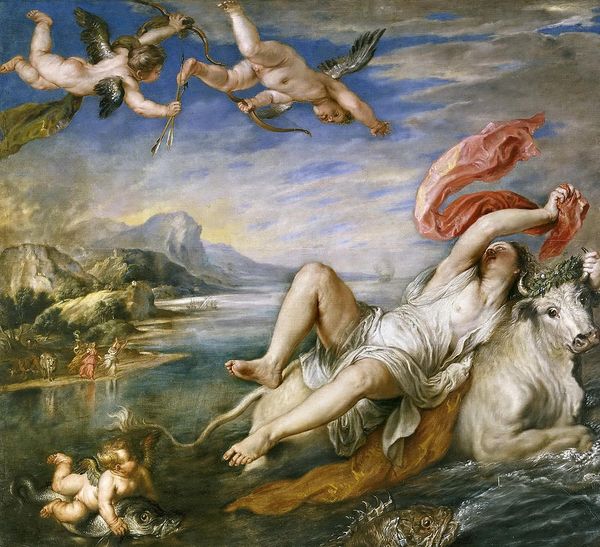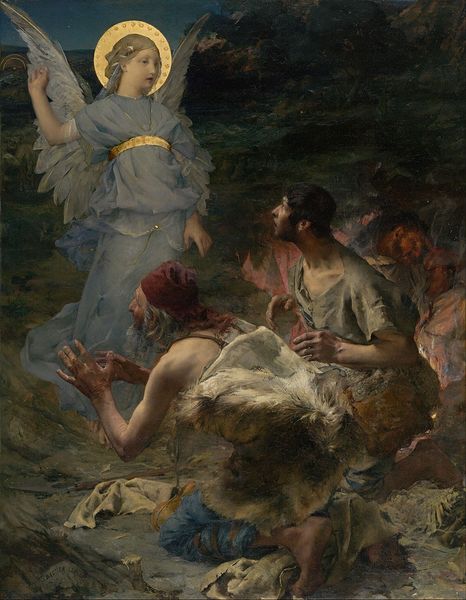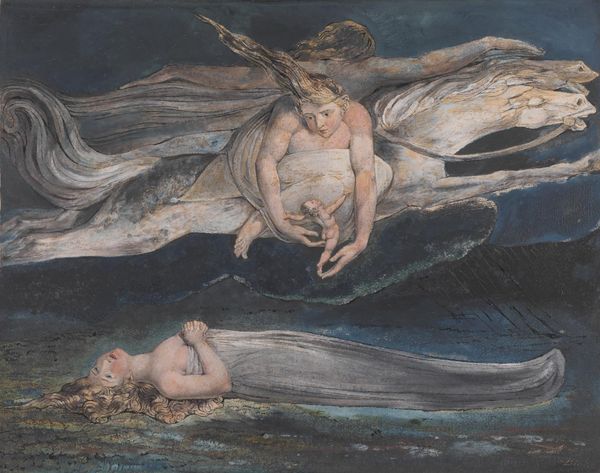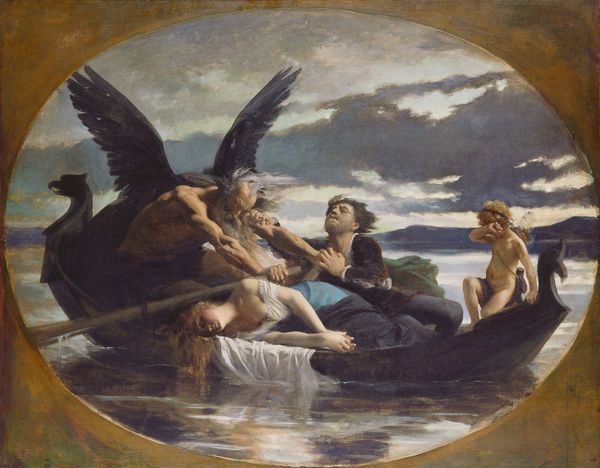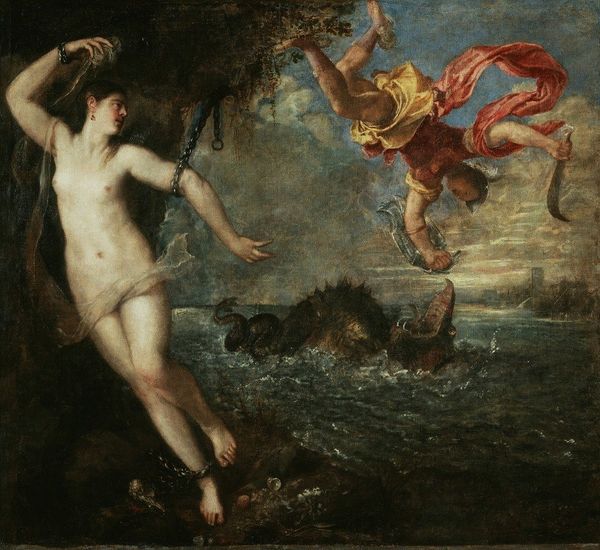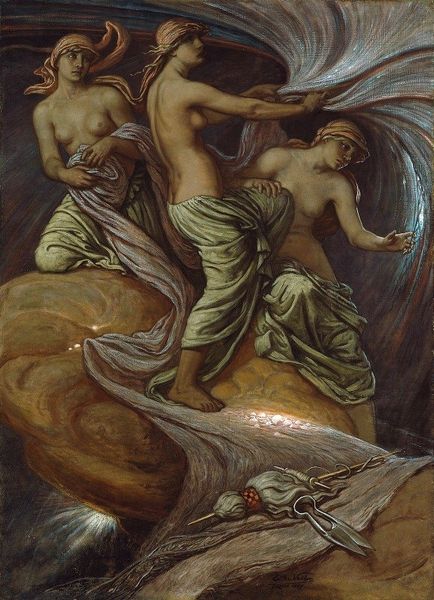
Copyright: Public Domain: Artvee
Curator: Here we have Edward Burne-Jones’s “Psyche receiving the Casket from Proserpine,” painted in 1881. Burne-Jones was, of course, a prominent figure in the Pre-Raphaelite movement. Editor: It’s striking, isn't it? A somber mood hangs over the scene. The palette is quite muted. I see the limp figure of Psyche on the lower left. Her pallor and stillness is intense, isn't it? And that strong light over her. Curator: Indeed. Burne-Jones draws upon the classical myth of Cupid and Psyche. In this episode, Psyche seeks a beauty balm from Proserpine for Venus, but is warned not to open the box. Of course, she does, and falls into a death-like sleep. The composition here stages the moment immediately following the opening of the casket, illustrating a point in the narrative when Psyche's fate is at its lowest ebb, alone, in a state of suspended animation. The red-robed Cupid swoops down to offer comfort. Editor: The portrayal of the female figure here is worth considering in light of Pre-Raphaelite conventions. She’s pale, almost ethereal, very passive, which aligns with Victorian ideals of feminine beauty and fragility, while subtly reflecting societal expectations around women's roles and agency. Curator: Absolutely, and yet, there is some art historical dispute about how much Burne-Jones genuinely adhered to those expectations, versus a modern, perhaps feminist, interest in female friendship and cooperation. Editor: Perhaps we can read Psyche's quest and disobedience not as a sign of weakness, but a yearning for self-discovery. That open box and its consequences speak to the risks women take when they defy limitations, whether the cost is death, metaphorically or literally. What strikes me too is the intimacy suggested by the artist, the sisterly comfort being administered between Psyche and Cupid. It speaks to an unconventional relationship, one in which there is genuine feeling, not just performative care. Curator: Yes, the figures' interconnectedness, along with the muted tonality and allegorical weight, create a powerful, emotionally resonant scene that lingers in the mind long after viewing it. It reminds us of how Victorian artists grappled with ancient narratives to both reinforce and subvert social norms. Editor: I find myself appreciating the ambiguity. There is sadness, yes, but the figures and composition also suggests a moment of strength drawn from companionship and shared understanding. Thank you for walking me through that, it offers so much to consider.
Comments
No comments
Be the first to comment and join the conversation on the ultimate creative platform.
